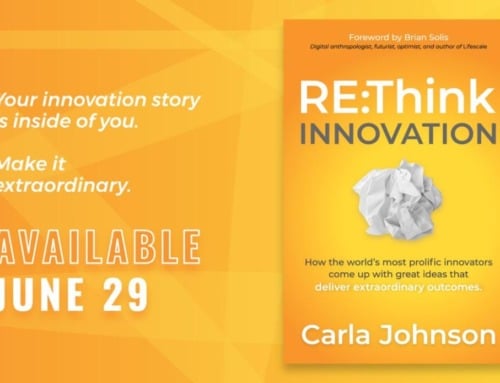There’s that word: niche. And you’re likely thinking: “One more consultant is telling me to eat my vegetables.” If you are an agency owner and have thus far resisted niching as part of your agency marketing strategy, think you don’t need it, or are tired of the topic, perhaps I can change your mind. Niching is perhaps the best form of marketing strategy that can help get your agency where you want it to be.
Niching has helped me generate over $10,000,000 as an entrepreneur. It’s the same idea I’ve taught to over a thousand graduates of my agency accelerator. In one case, an agency owner attracted over 2,000 leads for her business in just a single year leveraging this strategy.
My goal is to help our clients make their agencies more successful, work less, make more money, and create predictable business models so that their agencies are assets that could potentially be sold at some point in time. When Drew asked me to share my insights with his community at AMI, I was excited to be a part of what he’s created, and I hope that some of what I have to share proves beneficial to you.
Hope Marketing Isn’t Good Enough
Referrals and word of mouth are the number one strategy digital agency owners use to grow their businesses. I call this, “Hope marketing” and it really isn’t a strategy at all. It’s called:
Not doing anything.
Hope marketing is the reason so many digital agencies struggle with predictability and scale in their business. And it might be why you can’t get out of the marketing and sales seats.
When I tell owners that word of mouth is “doing nothing,” the response I usually get is something along the lines of:
“But we do great work! And people refer us because we focus everything on our great work!”
Awesome. But let’s agree in this hyper-competitive industry that doing “great work” is table stakes. If you’re not great at what you do (or at least good), then that is a whole other set of problems.
I have friend in Denver who had a successful design agency for 20 years, but who still ultimately went out of business. It happens.
Here’s how hope marketing works. Any time you use the word “hope” when talking about how you’re going to get your next client:
- “I hope I get a referral from this client.”
- “I hope they call me” after handing out a business card.
- “I hope we get a lead soon…”
Hope marketing is when you have no control or visibility on when and where you’ll get your next lead. You have no idea if it will be a pre-revenue startup or a billion dollar publicly traded company.
When your lead volume is unpredictable, it’s hard to build systems around servicing leads. Owners find themselves resistant to let go of sales responsibilities because every prospect is so valuable.
“Who knows when the next opportunity is coming, so I better land this one,” is often the mindset.
Hope marketing also leads to a problem of quality. When I talk about quality, I’m not talking about “good people versus. bad people.” Leads are just people. People with problems.
A quality lead is one that matches your ideal customer. Someone with an interest or problem and resources to solve that problem who is in alignment with who you serve best.
A Bigger Problem
Before I go on to tell you how to solve the problem of hope marketing and how to build a predictable system that generates leads, I want to address one more issue. It’s a much bigger problem than lack of niche or marketing strategy.
It’s what I call the awareness problem.
A lack of awareness shows up when an owner has chosen a marketing strategy or niche for their business, but they aren’t conscious of it. And when they’re not aware of it, they can’t tell other people about it, focus their marketing message, build systems, or delegate responsibilities to others in the business to take some of the marketing weight off their shoulders.
It shows up with statements like:
- “I get clients by building relationships.”
- “I don’t have a niche.”
- “I don’t need to market.”
When I dig deeper with folks who say these types of things, it turns out that they do have a market after all. They aren’t aware of it, and that becomes a limiting belief.
Not only that, but marketing their business and generating leads becomes a secret formula that only the owner knows. It leads to a “wizard complex” and, while feeding the ego of the owner in the short term, ultimately handcuffs them to the business.
A lot of owners resist niching because they think they need to pick a vertical or a new market.
But the best and most effective marketing strategy I help agencies uncover is the one they are already doing but of which they are unaware. With awareness comes clarity and then we can start to demystify the lead generation engine, oil it up, and feed it with as much fuel as possible.
From Generalist Designer to Solar Empire
Here’s an example that lays out exactly what I mean when I talk about how focusing on niches as your marketing strategy lead to success.
One of my students came to me a few years ago looking for help with her business, and she had a story I’ve heard many times over. She had been running her own design business for two decades and the things she used to do to get clients weren’t working anymore.
She relied on referrals and word of mouth that whole time and, all of a sudden, the well dried up. She started pulling from her savings to keep the business open and meet her payroll demands.
At the time, her business was a generalist design firm. Anyone could be her client. But no one was showing up to enter into a contract. Like many others in her situation, she felt as though the options to try to get out there and meet business owners were overwhelming, and it seemed like shutting down her business was the best option.
I convinced her to join our 10-week agency Bootcamp and see if we could figure out a better path forward together. I’m going to tell you exactly what we had her do and how it changed her business (and life).
Setting Strategy
The first question I ask students in our Bootcamp is “Why are you in this business?” You can’t ask yourself that question enough. The answer to this establishes what’s at stake. It’s the fuel that will drive us through adversity while we execute the solution to my second question:
“What is your strategy?”
Your strategy is your plan for how you are going to grow your business.
If you want to achieve predictability and scale in your agency, your strategy must answer these five questions:
- Who is your target client?
- What problem(s) do they have?
- How do you solve them?
- What is your value proposition?
- How are you going to reach these clients?
When my student came to me, her answer to question #1 was “small businesses.” I congratulated her that her pool of potential clients was twenty-eight million businesses (just in the U.S.).
Your potential customer has to hear or see you at least seven times before they “see you” for the first time. If advertising was in her future, that would require a pretty big ad budget to get her message out to that pool of people seven times over.
When your market is too big, you cannot afford to put your message in front of the same group of people in the repetitive way that good performing ads require.
We took a deep dive through her existing clients, successes, local market, interests, and market opportunities and concluded that solar installers in her local region were a good fit. The resulting companies in this direct focus combined with some adjacent complementary businesses that supported this market, amounted to a few thousand businesses.
Enough to keep her marketing busy for many years, but not so many that the masses would dilute her marketing.
A niche doesn’t always mean a market vertical, but in her case, there was a lot of existing infrastructure to get her message out and gain traction. There were multiple conferences, some publishers, and potential channel partners that looked like excellent starting points to gain entry into her market.
We answered the five marketing strategy questions, and once she got clear, it was time to execute.
Time for a Tactic
In my experience, the best tactics to get started with are the ones that take advantage of what I call “market infrastructure.” If you are brand new to a market or have minimal traction, I have some good news for you.
Many have come before you, invested countless hours and dollars, with the sole objective of building up a massive audience of your ideal customer. All you have to do is show up and provide value.
Market infrastructure is:
- Conferences
- Publishers
- Associations
- Strategic partners
- Prospect companies
If there isn’t a conference for the market you are targeting, you might reconsider your market. Not because I think you should go to conferences (even though you should), but because conferences are a sort of proof of life within your market. It says that the way you think about how people organize matches reality.
It says that people spend money on marketing. They spend money on organizing. And other companies (i.e., sponsors) see enough opportunity in the market to spend tens of thousands to attend and solicit the market.
As an example, your market or target audience is something like “dog walkers in Western Illinois” and there is no conference, no association, and no organization built around this target audience and their needs, it’s a sign that perhaps you need to widen your scope a bit.
Success with Conferences
In my student’s case, there were plenty of conferences. She identified three she could attend within the first year of executing against her strategy. In preparation for attending the conference, she created an exact copy of her existing website but rebranded it to fit her market and updated some content to focus on the problems of solar installers. A booth wrap, some popup banners, and a fishbowl for business cards, and she was good to go. Here’s what it looked like:

Each time she went to a conference in her niche, she met hundreds of potential prospects. She did a giveaway and accumulated business cards (i.e., leads). She shook hands with and had countless hours of conversations. She saturated herself with the language and issues of her niche.
She learned that the market was saturated with fly-by-night lead generators that were gouging solar installers. She discovered that government subsidies and laws were always in flux and had a significant impact on marketing dollars. She learned that certain types of installers were terrible fits for her services based on specific answers to qualifying questions.
With only a couple of marketing companies present at each trade show, she became a sought-after resource. People have marketing problems, and she was there to start the conversation.
By the end of her first year within her niche she built:
- An email list of over 2,000 companies in her niche
- Systems and documentation for getting the most out of conferences
- Reusable marketing collateral
- Lead magnets to capture interest
- Email autoresponders to convert interest to prospects
- Workflows for an appointment setter to follow up on leads
- Productized services to sell routine solutions
After her first year, she realized attending three conferences was overkill. She had too many leads. The second year she dialed it back and focused on the best performing conference. The relationships she formed in year one led to better booth placement and an offer to deliver a workshop at the event.
Solving her leads problem opened another issue around sales systems. Solving both problems created a predictable business with clarity around her pipeline, how long it took to generate a sale, how much effort was required, and what systems performed the best for specific needs.
Most agencies invest their precious marketing investment in disconnected tactics that don’t deliver consistent results. They engage in random activities in bursts and spurts.
What I’ve witnessed over time with this particular student is that she’s been able to work a couple of marketing tactics really well against her strategy, instead of being constantly overwhelmed by choice and demeaned with ineffective activities.
For her, niching led to two major wins:
- She made more money
- She had more time to do the work she loves
Her business turned around. She was taking home a solid payday again. And the crazy part was that she was spending less time doing it. Because of the predictability she was able to establish with the business, she could take time off again and confidently know when to dial up her marketing efforts to land new deals.
Not only that, but because she has systems and documentation and clarity, her team is aware of who their ideal customer is, how they reach them as a company, the language they speak and how they can service their needs without the agency owner necessarily being a part of the sales pitch or personally servicing the account. That’s a major win for any agency in terms of efficiency, productivity, and scale.
The Big Test
Imagine for a moment you needed to leave your agency. Maybe it’s because you’re so burned out you need a break. Perhaps it’s because of a health or family crisis. Whatever the reason, you’re out.
Does your business survive without you?
Can another take the reins of business development?
Could they find these ideal customers you have fed your business for so long?
Do they know what projects to avoid?
Are they clear on where to even begin in your absence?
If these questions are giving you heartburn, then perhaps finally following the advice of all these “niching” consultants could do you some good. Finding your niche isn’t about giving up on exciting projects. It’s not about turning your business into a conveyor belt churning out identical-looking websites from templates.
It’s about building your business as an asset.
I hope this provides some food for thought moving forward, as you think about your agency marketing strategy and consider whether niching might just be the thing that’s missing from your focus. Try it, it might just make all the difference in the world.






